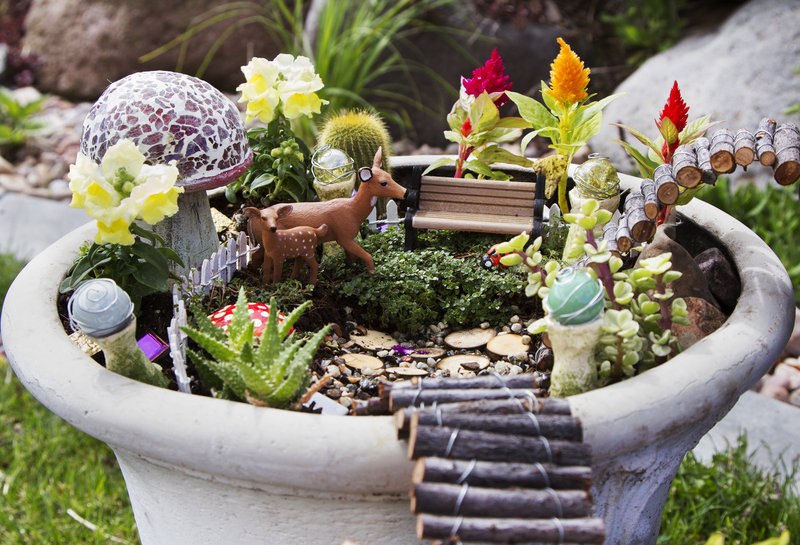Grass Goals: The Beginner's Path to a Beautiful Lawn
Dreaming of a lush, vibrant lawn, but not sure where to start? Welcome to your complete guide to achieving your grass goals. Whether you're a new homeowner or simply want to improve your outdoor space, this comprehensive, beginner-friendly article will guide you step-by-step toward a flourishing green carpet. Let's unlock the secrets to cultivating a beautiful lawn that will be the envy of your neighborhood.
Understanding Your Lawn: The Foundation of Grass Goals
Before you grab a bag of grass seed or fire up the mower, it's important to understand what makes up a healthy lawn. Each yard is unique, with its own soil, sunlight, and climate conditions. By evaluating these key factors, you set the stage for long-lasting lawn success.
Assessing Your Current Lawn
- Soil Type: Is your soil clay, sandy, or loamy? Each type has different watering and nutrient needs.
- Drainage: Note any standing water or overly dry spots.
- Sunlight: How many hours of sunlight does your yard receive daily?
- Existing Grass: Identify what grass varieties (if any) are already established.
A soil test kit is a wise investment. It will tell you your soil's pH and nutrient composition, revealing if you need amendments for optimal grass growth. Grass thrives best in pH ranges between 6.0 and 7.0.

Choosing the Right Grass for Your Lawn Goals
Your path to a beautiful lawn begins with choosing grass suited to your environment and lifestyle. There are two primary categories of turf:
- Cool-Season Grasses (fescue, bluegrass, ryegrass): Best for regions with cold winters and moderate summers.
- Warm-Season Grasses (Bermuda, Zoysia, St. Augustine): Thrive in hot, humid, or arid climates.
Factors to Consider When Selecting Grass Seed
- Climate and Region: Match grass type to local temperatures and rainfall.
- Sunlight: Some grass prefers full sun, while others tolerate shade.
- Maintenance Needs: Do you want a low-maintenance lawn or don't mind more upkeep?
- Traffic Resistance: Will your yard see kids, pets, or frequent foot traffic?
Pro Tip: Consult with a local garden center or cooperative extension office for advice on the best grass for your location and soil type.
Preparing the Ground: Laying the Foundation for Grass Success
Preparation may not be the most exciting step, but it's crucial for a healthy, beautiful lawn. Here's a step-by-step guide:
Step 1: Clear the Area
- Remove weeds, rocks, and debris using a rake, garden fork, or by hand.
- If converting from existing turf, consider renting a sod cutter.
Step 2: Improve the Soil
- Till the soil to a depth of 4-6 inches.
- Add compost or organic material to enrich poor soil.
- Apply lime or sulfur as needed to balance soil pH based on your soil test.
Step 3: Level and Firm the Surface
- Use a rake to smooth out high and low spots.
- Lightly compact the soil with a roller to prevent future settling.
Seeding or Sodding: Starting Your Lawn
When it comes to launching your grass goals, you have two main options: seeding or sodding.
Grass Seeding: Pros and Cons
- Cost-effective and offers more grass variety choices.
- Best time: Early fall or spring, depending on grass type.
- Requires patience (germination can take several weeks).
Sodding: Instant Gratification
- Pre-grown grass that provides an instant green carpet.
- More expensive than seeding, but less waiting time.
- Must be laid quickly and watered immediately after installation.
Seeding Steps for Beginners
- Spread seed evenly using a broadcast spreader.
- Lightly rake to ensure good seed-to-soil contact.
- Apply a thin layer of mulch or straw to retain moisture and protect seeds from birds.
- Water gently but thoroughly. Keep soil consistently moist until seeds germinate.
Tips for Laying Sod
- Stagger seams, like bricks, for a natural look.
- Press sod firmly against soil and neighboring pieces to remove air pockets.
- Water deeply immediately after installation, then daily until established.
Essential Lawn Maintenance Tips
Achieving those grass goals doesn't end at planting. Regular lawn maintenance keeps your turf healthy, green, and weed-free all season long. Here are the key practices every beginner should know:
Watering Wisdom
- Water deeply and infrequently. Target 1 inch of water once or twice per week.
- Morning watering reduces evaporation and disease risk.
- New lawns need extra attention--keep seeds or sod moist, not soggy.
Mowing Matters
- Don't mow too short! Leave grass blades at least 2.5-4 inches tall, depending on variety.
- Follow the "one-third rule": Never remove more than 1/3 of blade length at once.
- Keep mower blades sharp for a clean cut.
Fertilizing for a Beautiful Lawn
- Feed your lawn with the right fertilizer at the proper time of year (spring or fall for cool-season, late spring for warm-season grasses).
- Use slow-release products for lasting nourishment.
- Follow label directions to avoid over-fertilizing.
Weed and Pest Control
- Remove weeds by hand or use weed control products designed for your grass type.
- Encourage thick, healthy grass to crowd out weeds naturally.
- Monitor for lawn pests and treat only as necessary--prevention is key!
Aeration and Overseeding
- Core aeration relieves compacted soil and improves air, water, and nutrient flow.
- Overseeding fills in thin areas and boosts lawn density.
- Best done in fall or spring, depending on grass variety.
Overcoming Common Lawn Care Challenges
Even with the best efforts, you may face a few bumps on your journey toward a lush, green lawn. Here are solutions to common issues:
- Brown Spots: Usually caused by under-watering, pet urine, or fungal disease. Water deeply, train pets to use a specific area, and treat fungus as recommended.
- Poor Germination: May result from poor seed-to-soil contact, low-quality seed, or inconsistent watering. Reseed as needed and keep soil moist.
- Uneven Growth: Often due to compacted soil, improper mowing, uneven sunlight, or poor nutrients. Aerate, adjust mowing habits, and fertilize wisely.
- Lawn Weeds: Dandelions, clover, and crabgrass are common invaders. Spot-treat with selective herbicides or pull by hand. A thick lawn naturally resists weed invasion.
Year-Round Lawn Care Calendar
Consistency is the secret to sustaining grass goals throughout the year. Follow this simple lawn care calendar to keep your lawn in top shape:
Spring Lawn Care
- Rake up winter debris.
- Aerate if needed, especially in compacted areas.
- Apply pre-emergent weed control and first application of fertilizer.
- Mow regularly as grass begins growing.
Summer Lawn Care
- Water deeply during dry spells.
- Mow at a higher setting to shade roots.
- Spot-treat for pests and weeds.
Fall Lawn Care
- Aerate and overseed for cool-season lawns.
- Apply fall fertilizer to strengthen roots for winter.
- Rake fallen leaves to prevent smothering grass.
Winter Preparation
- Remove leftover leaves and debris.
- Keep off dormant grass as much as possible.
- Service your mower and prep tools for spring.
Eco-Friendly and Low-Maintenance Lawn Solutions
Today's lawn goals often include eco-friendly and sustainable practices. Consider these modern approaches:
- Clover lawns: Drought-tolerant and naturally resistant to weeds and pests.
- Native grass mixes: Adapted to local climate, requiring less water and fertilizer.
- Organic lawn care: Use compost, mulch clippings, and organic fertilizers to feed your turf naturally.
- Mulching mowers: Leave grass clippings to decompose, returning nutrients to the soil.

Tools Every Beginner Needs for Beautiful Grass
Investing in the right tools makes achieving your dream lawn both easier and more enjoyable. Here's a starter list for first-time lawn enthusiasts:
- Lawn mower (push or electric for small lawns, gas or riding for larger yards)
- Garden rake (for leveling and clearing debris)
- Hose and sprinkler for watering
- Broadcast spreader (for seed and fertilizer)
- Soil test kit
- Hand weeder
Reaching Your Grass Goals: Final Thoughts
Transforming a patchy plot into a beautiful, thriving lawn might seem daunting initially, but the path is clear and achievable for beginners. By understanding your lawn's needs, choosing the right grass, preparing the soil, planting carefully, and continuing with diligent care, your grass goals are within reach. Soon, you'll be enjoying morning coffee on emerald blades, hosting backyard barbecues, or simply soaking in the beauty of your handiwork.
Remember: Patience and consistency are your best allies. Each year of care brings more root strength, lusher growth, and closer realization of the lawn of your dreams. Happy growing!


